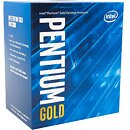- Joined
- Oct 9, 2007
- Messages
- 47,885 (7.38/day)
- Location
- Dublin, Ireland
| System Name | RBMK-1000 |
|---|---|
| Processor | AMD Ryzen 7 5700G |
| Motherboard | Gigabyte B550 AORUS Elite V2 |
| Cooling | DeepCool Gammax L240 V2 |
| Memory | 2x 16GB DDR4-3200 |
| Video Card(s) | Galax RTX 4070 Ti EX |
| Storage | Samsung 990 1TB |
| Display(s) | BenQ 1440p 60 Hz 27-inch |
| Case | Corsair Carbide 100R |
| Audio Device(s) | ASUS SupremeFX S1220A |
| Power Supply | Cooler Master MWE Gold 650W |
| Mouse | ASUS ROG Strix Impact |
| Keyboard | Gamdias Hermes E2 |
| Software | Windows 11 Pro |
Intel's next-generation Pentium Gold and Celeron entry-level processors based on the "Tiger Lake" microarchitecture could finally receive the AVX2 instruction set. Intel had segmented AVX and AVX2 to be exclusive to the Core and Xeon brands, with the Pentium Gold and Celeron products based on the same microarchitectures to artificially lack these instructions.
Intel updated its ARK product information database with entries for "Tiger Lake" based Pentium Gold and Celeron products. The page for the Pentium Gold 7505 and Celeron 6305, mention support for AVX2 besides SSE4. Both are mobile chips with 15 W TDP, and are built on the same 10 nm SuperFin process as the rest of the 11th Gen Core "Tiger Lake" processor family.

View at TechPowerUp Main Site
Intel updated its ARK product information database with entries for "Tiger Lake" based Pentium Gold and Celeron products. The page for the Pentium Gold 7505 and Celeron 6305, mention support for AVX2 besides SSE4. Both are mobile chips with 15 W TDP, and are built on the same 10 nm SuperFin process as the rest of the 11th Gen Core "Tiger Lake" processor family.

View at TechPowerUp Main Site



